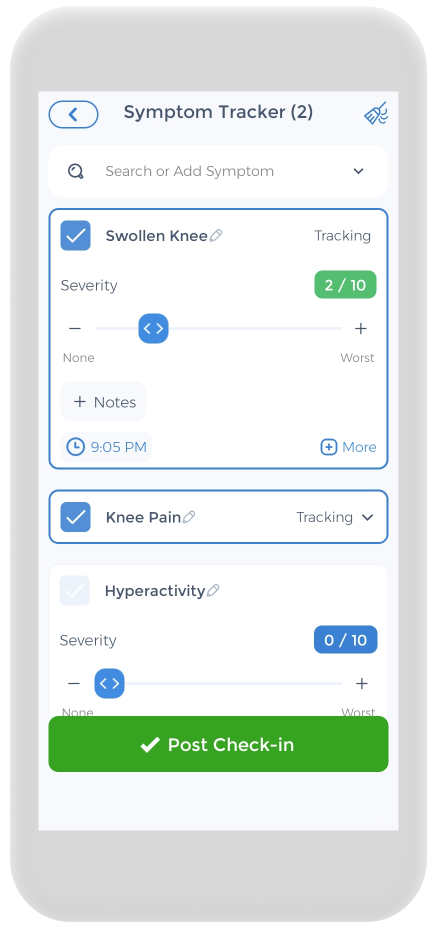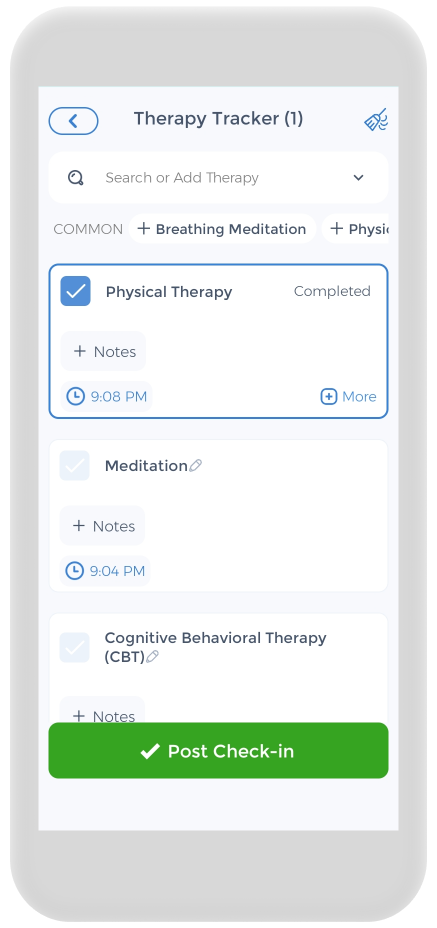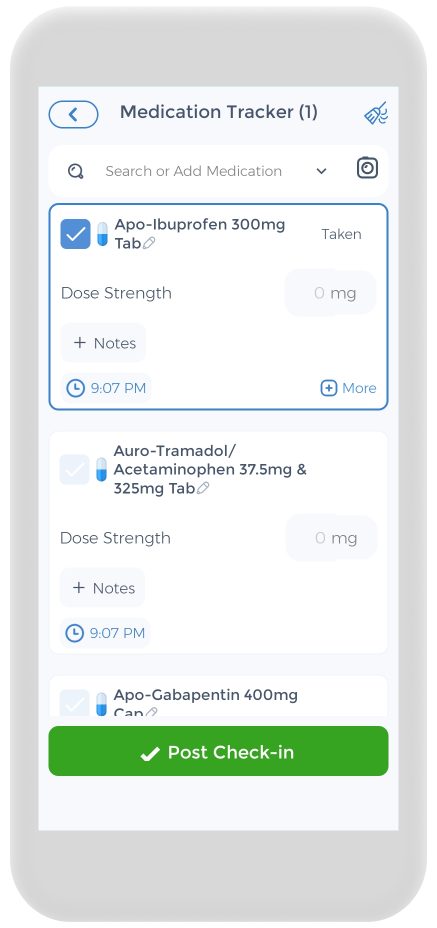 Knee infections can be a serious medical condition that requires prompt attention and appropriate treatment. Understanding the causes, symptoms, risks, and treatment options for knee infections is crucial for effective management and recovery. In this article, we will explore all aspects of knee infections and provide you with valuable information to help you navigate this medical condition.
Knee infections can be a serious medical condition that requires prompt attention and appropriate treatment. Understanding the causes, symptoms, risks, and treatment options for knee infections is crucial for effective management and recovery. In this article, we will explore all aspects of knee infections and provide you with valuable information to help you navigate this medical condition.
Understanding Knee Infections
Knee infections, also known as septic arthritis, occur when harmful bacteria or viruses invade the knee joint, leading to inflammation and tissue damage. The knee joint is a complex structure that can be vulnerable to infections due to various factors, including injury, surgery, or conditions that weaken the immune system.
When it comes to knee infections, understanding the causes, symptoms, and potential risks is crucial for early intervention and successful treatment. By recognizing the signs and seeking prompt medical attention, individuals can prevent further complications and ensure a smooth recovery.
Causes of Knee Infections
There are several possible causes to develop septic arthritis. Common sources of infection include [1]:
- Direct contamination: The knee joint can become infected through an open wound or surgical procedure, where harmful bacteria or viruses directly enter the joint.
- Spread of infection: In some cases, knee infections can occur when a viral or bacterial infection from another part of the body spreads through the bloodstream and reaches the knee joint.
- Secondary infection: Existing conditions, such as rheumatoid arthritis or diabetes, can weaken the immune system and make individuals more susceptible to developing knee infections.
Understanding the potential causes of septic arthritis can help individuals take preventive measures and reduce their risk of developing this condition.
Symptoms to Look Out For
Identifying septic arthritis symptoms is essential for early intervention. Some common septic arthritis symptoms include:
- Severe pain and swelling: Individuals with knee infections often experience intense pain and
 swelling in the affected joint.
swelling in the affected joint. - Redness and warmth: The knee may appear red and feel warm to the touch, indicating inflammation.
- Difficulty moving the knee: Infections can restrict the movement of the knee joint, making it challenging to bend or straighten the leg.
- Fever and chills: Systemic symptoms such as fever and chills may accompany knee infections, indicating an immune response to the infection.
- Increased joint stiffness: Individuals may experience stiffness in the knee joint, leading to decreased range of motion.
If you experience any of these symptoms, it is crucial to seek medical attention promptly to prevent further complications. Early diagnosis and treatment can significantly improve the outcome of knee infections.
Risks and Complications
Left untreated, septic arthritis can lead to serious complications that may impact your overall health and mobility. Some potential risks include:
- Joint damage and deterioration: Prolonged infection can cause damage to the knee joint, leading to long-term mobility issues and functional limitations.
- Formation of abscesses: In some cases, knee infections can result in the formation of abscesses or pus-filled pockets within the joint, further exacerbating the symptoms.
- Spread of infection: If left untreated, knee infections can spread to nearby tissues or other joints, causing additional infections and complications.
- Systemic infection: In rare cases, knee infections can progress to a systemic infection, also known as sepsis. Sepsis is a life-threatening condition that requires immediate medical attention.
Early diagnosis and appropriate treatment are vital in preventing these complications and ensuring a successful recovery. By promptly addressing septic arthritis, individuals can minimize the risks and regain their mobility and overall well-being.
Diagnosis of Knee Infections
Diagnosing septic arthritis requires a comprehensive evaluation by a healthcare professional. The following methods and tests may be used:
Medical History and Physical Examination
Your healthcare provider will inquire about your symptoms, medical history, and recent activities or injuries that may have contributed to the infection. They will also perform a physical examination to assess the knee’s appearance, range of motion, and tenderness.
During the medical history assessment, your healthcare provider may ask you questions about any recent infections or illnesses you have had, as well as any previous knee injuries or surgeries. They may also inquire about your occupation or hobbies, as certain activities or professions can increase the risk of knee infections.
When conducting a physical examination, your healthcare provider will carefully examine the affected knee. They will assess the skin for any signs of redness, swelling, or warmth, which can indicate an infection. They will also evaluate the knee’s range of motion and look for any signs of joint instability or deformities.
In addition to the knee examination, your healthcare provider may also perform a thorough examination of your other joints, as some infections can spread from one joint to another.
Laboratory Tests
Laboratory tests, such as blood tests and joint fluid analysis, can help identify the presence of infection and determine the specific type of bacteria or virus responsible.
Blood tests can provide valuable information about the overall health of your body and help detect any signs of infection. These tests may include a complete blood count (CBC), which can reveal an elevated white blood cell count, indicating an immune response to an infection. Other blood tests, such as erythrocyte sedimentation rate (ESR) or C-reactive protein (CRP) levels, can also indicate the presence of inflammation in the body.
Joint fluid analysis involves the extraction and examination of fluid from the affected knee joint. This procedure, known as arthrocentesis, can help determine the presence of infection by analyzing the fluid for the presence of bacteria or other microorganisms. The joint fluid can also be tested for markers of inflammation, such as elevated white blood cell count or increased levels of certain proteins.
Imaging Tests
Imaging tests, such as X-rays, ultrasound, or magnetic resonance imaging (MRI), may be used to assess the extent of joint damage and identify any underlying conditions contributing to the joint infection itself.
X-rays can provide detailed images of the bones in the knee joint, allowing healthcare providers to evaluate for any signs and symptoms of bone damage or abnormalities. This can help determine if the infection has spread to the bone, a condition known as osteomyelitis. X-rays can also help identify any joint deformities or changes in the joint space, which can be indicative of an infection.
Ultrasound uses sound waves to create real-time images of the soft tissues and structures within the knee joint. It can help identify any fluid accumulation or abscesses, which are common signs of an infection. Ultrasound can also assist in guiding the needle during joint fluid aspiration for further analysis.
Magnetic resonance imaging (MRI) is a powerful imaging technique that uses a magnetic field and radio waves to generate detailed images of the knee joint. It can provide valuable information about soft tissues, such as ligaments, tendons, and cartilage, allowing healthcare providers to assess for any signs of damage or inflammation. MRI can also help identify the extent of the infection and determine if there are any associated complications, such as joint effusion or abscess formation.
Treatment Options for Knee Infections
The treatment once you got septic arthritis diagnosed typically involves a combination of approaches tailored to the individual’s condition. The following options are commonly employed:
Septic arthritis can be a serious medical condition that requires prompt and appropriate treatment. The choice of treatment depends on various factors, including how septic arthritis affects the severity of the infection, the type of bacteria involved, and the patient’s overall health. Let’s explore some of the treatment options in more detail:
Antibiotic Treatment
If your septic arthritis infection is bacterial, your healthcare provider will prescribe antibiotics to eliminate the bacteria. Antibiotics are medications that can kill or inhibit the growth of bacteria. The specific antibiotic and duration of treatment will depend on the severity of the infection and the identified bacteria’s susceptibility to oral antibiotics. It is crucial to complete the full course of antibiotics as prescribed by your healthcare provider to ensure the eradication of the infection.
In some cases, a knee infection may be caused by multiple bacteria or be resistant to certain antibiotics. In such situations, your healthcare provider may need to adjust the antibiotic regimen or explore alternative treatment options.
Surgery for Severe Infections
In cases where septic arthritis is severe or cannot be effectively treated with antibiotics alone, surgical intervention may be necessary. Surgery for septic arthritis aims to drain any abscesses, remove infected tissue, and restore joint function. The specific surgical procedure will depend on the extent of the infection and the damage it has caused.
During surgery, the orthopedic surgeon may perform procedures such as arthroscopy, debridement, or even joint replacement surgery in severe cases. These interventions help to remove infected material, improve joint mobility, and alleviate pain. The decision to undergo surgery is typically made after a thorough evaluation of the patient’s condition and a discussion between the patient and their healthcare provider.
Physical Therapy and Rehabilitation
 Following treatment, physical therapy and rehabilitation play a vital role in restoring knee function, improving range of motion, and strengthening the surrounding muscles and tissues. Physical therapists are trained healthcare professionals who specialize in helping patients recover from injuries and surgeries [2].
Following treatment, physical therapy and rehabilitation play a vital role in restoring knee function, improving range of motion, and strengthening the surrounding muscles and tissues. Physical therapists are trained healthcare professionals who specialize in helping patients recover from injuries and surgeries [2].
Your healthcare provider or physical therapist will develop a personalized exercise program to facilitate your recovery. This program may include exercises to improve flexibility, strengthen the quadriceps and hamstring muscles, and enhance balance and coordination. Physical therapy sessions may also involve modalities such as heat or cold therapy, ultrasound, or electrical stimulation to aid in pain management and tissue healing.
Rehabilitation after septic arthritis is a gradual process that requires patience and dedication. Your physical therapist will closely monitor your progress, make adjustments to your exercise program as needed, and provide guidance on activities to avoid during the recovery period. It is essential to follow your physical therapist’s instructions and attend all scheduled sessions to achieve the best possible outcome.
Preventing Knee Infections
While not all knee infections can be prevented, there are steps you can take to minimize your risk:
Hygiene Practices
Maintaining good hygiene can significantly reduce your chances of developing septic arthritis. Regularly clean any cuts or wounds, practice proper hand hygiene, and avoid sharing personal items that may transmit infection.
When it comes to septic arthritis, prevention is key. Ensuring that you keep the affected area clean and free from any potential sources of infection is crucial. If you have any cuts or wounds around the knee, it is important to clean them thoroughly with mild soap and water. Applying an antiseptic ointment and covering the area with a sterile bandage can provide an additional layer of protection.
Moreover, practicing proper hand hygiene is essential in preventing the spread of septic arthritis. Washing your hands with soap and water for at least 20 seconds, especially before and after touching the knee area, can help eliminate any potential pathogens that may cause an infection. If soap and water are not readily available, using an alcohol-based hand sanitizer can also be effective.
Additionally, it is crucial to avoid sharing personal items that may transmit infection. Items such as towels, razors, or clothing should not be shared with others, as they can harbor bacteria or other microorganisms that may lead to knee infections. By maintaining good personal hygiene practices and avoiding the sharing of personal items, you can significantly reduce your risk of developing a knee infection.
Vaccination and Immunity
Keeping up to date with vaccinations and maintaining a healthy immune system can help ward off infections, including septic arthritis.
Vaccinations play a vital role in preventing various infections, and septic arthritis is no exception. Ensuring that you are up to date with all recommended vaccinations can provide you with protection against infectious diseases that may lead to septic arthritis. Vaccines such as tetanus, which prevent bacterial infections, and vaccines for viral infections like influenza can help bolster your immune system and reduce the risk of septic arthritis.
In addition to vaccinations, maintaining a healthy immune system is crucial in preventing septic arthritis. A strong immune system can effectively fight off pathogens and reduce the likelihood of infection. To support your immune system, it is important to maintain a balanced diet rich in fruits, vegetables, whole grains, and lean proteins. Regular exercise can also contribute to a healthy immune system by improving blood circulation and promoting the production of immune cells.
Furthermore, getting enough rest and managing stress levels are important factors in maintaining a robust immune system. Chronic stress and lack of sleep can weaken the immune system, making you more susceptible to infections. By prioritizing your overall health and taking steps to strengthen your immune system, you can significantly reduce the risk of knee infections.
Regular Exercise and Healthy Diet
Engaging in regular exercise and consuming a balanced diet can strengthen your immune system and promote overall health, reducing the risk of infections and their complications.
Regular exercise and a healthy diet have numerous benefits for your overall well-being, including reducing the risk of knee infections. Exercise helps improve blood circulation, which allows immune cells to travel more efficiently throughout the body, enhancing their ability to fight off infections.
Engaging in activities that promote knee strength and flexibility can also help prevent septic arthritis. Strengthening the muscles around the knee joint through exercises like squats, lunges, and leg lifts can provide stability and support, reducing the risk of injury and subsequent infection. Stretching exercises, such as yoga or Pilates, can help improve flexibility and range of motion, reducing the strain on the knee joint and minimizing the risk of infections.
In addition to exercise, maintaining a balanced diet is essential in preventing septic arthritis. A diet rich in nutrients, such as vitamins A, C, and E, as well as zinc and selenium, can help support a healthy immune system. These nutrients can be found in various fruits, vegetables, nuts, seeds, and whole grains.
Furthermore, staying hydrated is important for maintaining overall health and preventing septic arthritis. Drinking an adequate amount of water throughout the day helps flush out toxins from the body and keeps the joints lubricated, reducing the risk of infections and other complications.
By incorporating regular exercise into your routine and adopting a balanced diet, you can strengthen your immune system, promote overall health, and reduce the various risk factors of knee infections and their potential complications.
Living with Knee Infections
Living with septic arthritis may present various challenges, but there are strategies to help manage your condition and improve your quality of life:
Pain Management Strategies
Your healthcare provider may recommend pain medications or other interventions to help alleviate knee pain and discomfort. It is essential to follow their instructions regarding medication use.
When it comes to managing the pain associated with a knee infection, there are various strategies you can employ. One effective method is the use of nonsteroidal anti-inflammatory drugs (NSAIDs). These medications, such as ibuprofen or naproxen, can help reduce inflammation and provide relief from pain. However, it is important to consult with your healthcare provider before starting any new medication regimen.
In addition to medication, physical therapy can play a crucial role in pain management. A skilled physical therapist can guide you through exercises and stretches specifically designed to strengthen the muscles surrounding the knee joint and improve mobility. These exercises can help alleviate pain and promote healing.
Mobility and Lifestyle Adjustments
Depending on the severity of septic arthritis and its impact on joint function, you may need to make modifications to your daily activities or use assistive devices, such as crutches or braces, to protect and support the knee.
When living with a knee infection, it is important to prioritize rest and avoid activities that may exacerbate the condition. Your healthcare provider may recommend limiting weight-bearing activities or providing specific guidelines on how to move and perform daily tasks without putting excessive strain on the knee joint.
Assistive devices can also be beneficial in maintaining mobility while protecting the infected knee. Crutches, for example, can help distribute weight away from the affected joint, reducing pain and allowing for easier movement. Similarly, braces or knee sleeves can provide stability and support, preventing further damage and promoting healing.
Emotional and Psychological Support
Coping with a knee infection can be emotionally challenging. Seeking support from loved ones, joining support groups, or engaging in activities that bring you joy and relaxation can help you navigate the emotional aspects of your journey.
Living with a knee infection can often lead to feelings of frustration, anxiety, and even depression. It is crucial to acknowledge and address these emotions to maintain overall well-being. Surrounding yourself with a strong support system, whether it’s family, friends, or a support group, can provide a sense of understanding and empathy.
Engaging in activities that bring you joy and relaxation can also be beneficial for your emotional well-being. Whether it’s pursuing a hobby, practicing mindfulness techniques, or simply spending time in nature, finding moments of peace and happiness can help alleviate stress and improve your overall outlook.
Remember, living with a knee infection is a journey that requires patience and perseverance. By implementing pain management strategies, making necessary lifestyle adjustments, and seeking emotional support, you can effectively navigate the challenges and improve your quality of life.
Case Studies and Success Stories
Real-life experiences and medical breakthroughs in treating knee infections provide valuable insights and hope for individuals dealing with this condition:
Overcoming Knee Infections: Personal Narratives
Sharing personal stories of individuals who have successfully battled knee infections can inspire and provide a sense of solidarity. These narratives can offer useful tips and guidance on managing the challenges associated with knee infections.
Medical Breakthroughs in Treating Knee Infections
Ongoing research and advancements in medical science have led to innovative treatment strategies for knee infections. Stay informed about the latest breakthroughs and discuss potential options with your healthcare provider.
The Future of Knee Infection Treatment
Exciting developments in both knee replacement and infection treatment are on the horizon. From novel antibiotics to advanced surgical techniques, the future looks promising for improving outcomes and enhancing patient recovery.
Overall, knee infections can significantly impact an individual’s well-being and mobility. Early recognition, prompt diagnosis, and appropriate treatment are essential for managing the condition effectively. By implementing preventive measures, adhering to treatment plans, and seeking support when needed, individuals can navigate the challenges of knee infections and regain a fulfilling life.
Using the CareClinic App to Manage Pain
Keeping a pain journal is beneficial to your health, and the CareClinic app can assist you with this. The app can also be used as a clinical and health journal. Simply enter your daily symptoms, meds, and triggers into the app’s pain notebook. Other components of the program are dedicated to tracking each of these. This can assist you in identifying early warning symptoms.
Sources
- https://www.ninds.nih.gov/health-information/disorders/pain
- https://painbc.ca/health-professionals/education/OT-workshop


